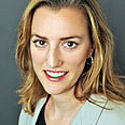02:03 PM
4 Ways To Stop Twitter Hacks That Swing The Markets
Alhough stock markets recovered within minutes of Tuesday’s 143-point fall in the Dow Jones industrial average due to a fake tweet, the damage was done.
The fake tweet about President Obama being injured in an explosion, which caused traders to instantly dump stock in anticipation of a global crisis, was quickly removed by AP employees, but it still left traders and quants scratching their heads over their vulnerability to breaking news on social media.
On a platform like Twitter that is largely un-moderated, algorithms that scan tweets and trade within nanoseconds of a story breaking on Twitter can have a devastating impact – or at the very least they can lead to stock market mini-flash crashes.
While algo traders first connected to Twitter four years ago, the social media platform has recently gained a much stronger foothold in the markets. Less than a month ago, regulators gave the greenlight for social media to be a source for market- moving news. Shortly after, Bloomberg announced that it was adding Twitter to its terminals.
So how can the markets avoid being dragged into a mind-numbingly quick downward – and upward – spiral by an unconfirmed Tweet?
First, trading firms need to make sure they have a number of firm risk procedures in place, including - but not limited to - circuit breakers that prevent algos from buying or dumping stock at break-neck speed without good reason.
Regulators also need to raise their game with highly sophisticated monitoring systems, suggests Scott Sellers, CEO of Azul Systems, which delivers high-performance and elastic Java Virtual Machines. “[Monitoring systems] need to be as complex and sophisticated as trading platforms themselves. There needs to be a layering of protection and several gates.”
Meanwhile, trading firms and algos should not just be relying on news from twitter to execute trades: there is a reason why verified news outlets – and the humans that are behind them – are still operating. Twitter is fast, but if you want to make sure that what you read on Twitter is true, you still want to check out long-standing respectable sources of news – outside their twitter feed. Particularly since the bigger news organizations now update their websites if not in real-time, then multiple times a day when a big story is breaking.
Further, the fake AP tweet which the Syrian Electronic Army later claimed to have authored, once again highlighted what seems to be a gaping hole in Twitter's security procedures. In February, users had to reset the passwords of at least 250,000 accounts after hackers broke into Twitter’s systems and were suspected of accessing users' data.
Currently, news organizations set their own passwords for their Twitter accounts, which raises the risk of hacks. Brands need to boost their Twitter security by using more complex passwords and incorporating password-management tools, Mashable notes.
Twitter has recently announced plans to introduce "two-factor authentication" which should stop hackers from breaking into accounts even if they get a hold of passwords. The two-factor authentication system has not yet been released, but it should be mandatory at least for “verified” accounts, Mashable suggests.
Most hacked Twitter accounts are "verified” – in other words Twitter has provided followers of those accounts with a guarantee that their author is a well-known brand or person. As a result, followers tend to implicitly trust what they read on a verified account.
There will always be errors and superficial actions that can move markets quickly. But particularly in today’s quick fire, electronic world, if trading firms, news organizations, regulators and social media platforms all adopt a more thoughtful, multi-pronged risk strategy, the markets would definitely be a safer place.
Melanie Rodier has worked as a print and broadcast journalist for over 10 years, covering business and finance, general news, and film trade news. Prior to joining Wall Street & Technology in April 2007, Melanie lived in Paris, where she worked for the International Herald ... View Full Bio
























